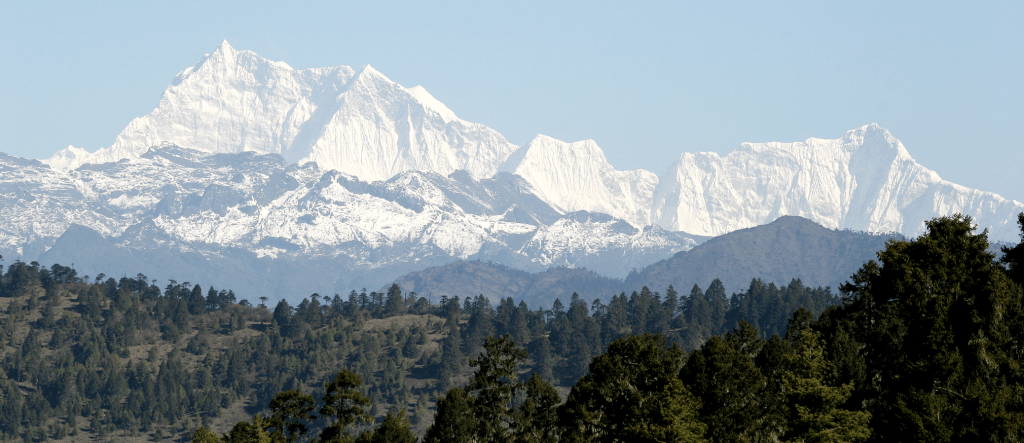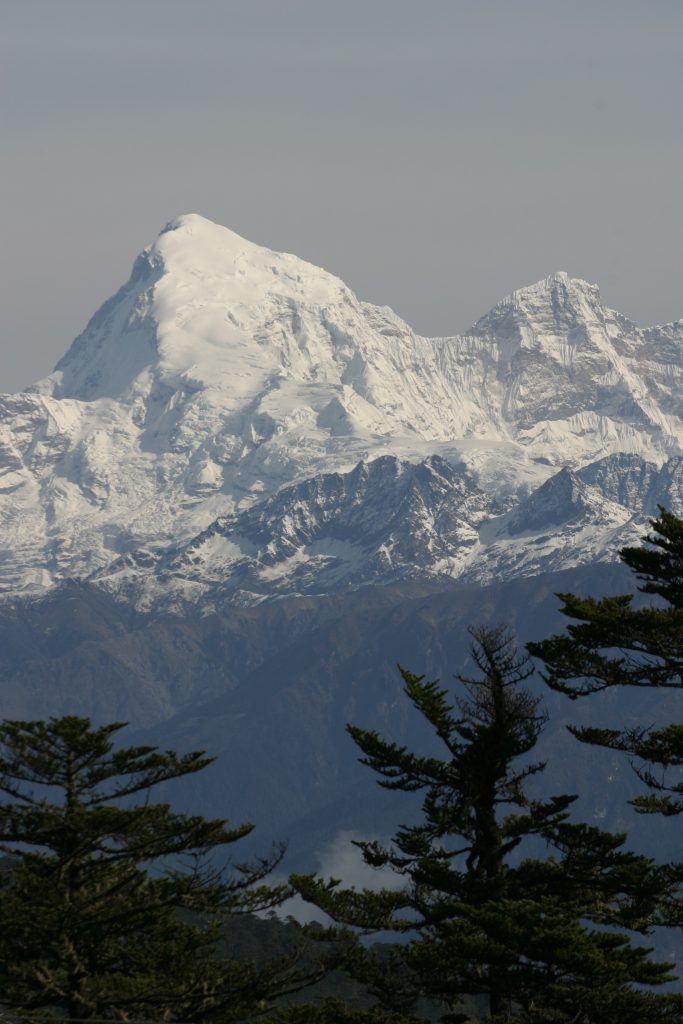Where the Gods Dwell
Bhutanese mountains have for centuries been sites for pilgrimages and home to prominent gurus. Sometimes, serving as natural barriers against marauding invaders, the mountains have always protected the Bhutanese. In turn, the Bhutanese, too, have always believed that the mountains are the abode of deities and have thus protected them.

Picture Courtesy: TCB
Bhutan is probably the only country in the world today that enforces a ban on mountaineering. The ban, imposed in 1987 by the 65th session of the National Assembly, was at the request of the locals – mainly the Layaps and the Lunaps who inhabit the northern mountainous regions of Bhutan.

It was only in the 1940s that it was discovered that Gangar Puensum at 7,300m was the highest peak in Bhutan. Until then, everybody – including English climbers like Freddy Spenser Chapman – thought Jumolhari was the tallest mountain in the small Himalayan nation. Chapman, in 1937, even claimed to have reached the summit of Jumolhari, a claim many have rubbished as he was alone and without any photographic proof. Nevertheless, three decades later, a joint Indo-Bhutan army team led by Indian Colonel Narendra Kumar did successfully reach the peak of Jumolhari.
At the time the Bhutan Mountaineering Regulation was introduced in 1983, there were many virgin peaks in Bhutan without names. The regulations laid down stringent conditions and only opened up a limited number of peaks for climbers. This was done keeping in line with the policy of controlled tourism while laying importance on ecological preservation – one of the pillars still of Gross National Happiness (GNH) – a philosophy that governs the Bhutanese.
Nevertheless, coming back, Gangar Puensum literally translates into ‘Three White-Mountain Siblings’ of which two mountains fall on the other side of the Bhutanese border. Fortunately, the tallest of the three mountains falls exactly on the border and the peak is therefore shared by Tibet and Bhutan. Today, the main peak of this mountain is known the world over as the highest unclimbed mountain in the world.
Just the trek to the foot of Gangar Puensum is a nine-day walk across the Bhutanese landscape of alpine plains. So far, there have been three attempts to climb Gangar Puensum and all three attempts have been unsuccessful. However, in 1998, an expedition team successfully climbed a subsidiary peak of the mountain from the Tibetan side.
In 1985, before the mountaineering ban was imposed, a Japanese and American team attempted to ascend the mountain. The Japanese expedition got to 22,500ft at the south ridge but retreated when one of their climbers got ill because of the altitude. The Americans, on the other hand, followed the wrong valley on the walk-in and never reached the mountain. In 1986, an Australian team too tried to scale the mountain but bad weather forced them back from 22,000ft. A similar fate was meted out to a British expedition the same year.
Today, even after four attempts, Gangar Puensum is unconquered and untainted. And, perhaps, the decision of the then National Assembly in 1987 has in a way contributed to this factor. Otherwise, who knows, Gangar Puensum too could have been labeled one of the world’s highest junkyards – just like Mt Everest.

